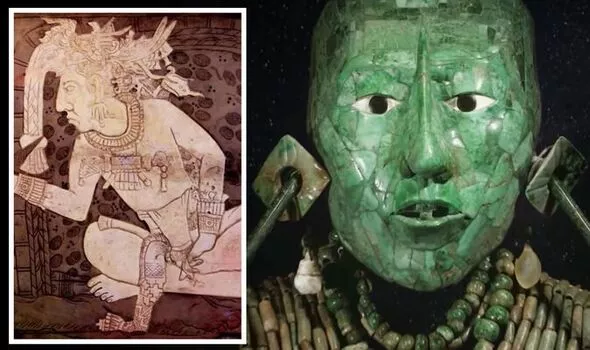Archaeologists stunned by ancient ‘death mask’ found in Mexican temple
Palenque is set amid lush forest and dense foliage in a slice of southern Mexico. It is not the largest Mayan city by any stretch, but it has been described as one of the most stunning. Its architecture and the accompanying carvings and sculptures are some of the finest surviving pieces of Mayan history, in a region where the civilisation once thrived.
Compared to other Maya settlements in Mexico, Palenque was technically advanced.
A sophisticated aqua-duct system provided its inhabitants with abundant spring water — just one of the many perks of living there.
In the seventh century AD, the city was ruled by the powerful king, Pacal the Great.
He had one of the longest reigns of any Maya monarch, taking the throne in 615 at the age of just 12, and ruled until his death aged 80.


While in power he oversaw the construction of some of Palenque’s jaw-dropping sacred sites like the huge Central Palace.
Perhaps most importantly, he commissioned the construction of the now-iconic Temple of the Inscriptions.
The temple and the work archaeologists have carried out in and around it was explored during the Smithsonian Channel’s documentary, ‘Sacred sites: Maya’.
In the mid-20th century, researchers discovered a relic that would give a “new insight” into what the Maya believed about the afterlife, according to the documentary’s narrator.

Excavating the temple floor, they uncovered a passage to a chamber deep within the pyramid.
It contained a sarcophagus covered by a stone lid — inside, lay the remains of an elite Mayan wearing a Jade “death mask”.
Hieroglyphs on the sarcophagus soon confirmed that the remains belonged to King Pacal, much to the surprise of the researchers.
This is because it meant that the temple housed the tomb of the great king himself. The narrator noted that while it is a place of burial, it is also “intended as a place of resurrection.”


On the sarcophagus lid, the images illustrate a central Mayan belief that the Universe is made up of three levels: the Earth, the underworld and the heavens. Leaving this world, Pascal emerges from the underworld and is reborn into eternal life in the heavens in the engravings.
The narrator said: “This is the essence of Mayan religion.”
Later on, in 2018, archaeologists made yet another groundbreaking discovery at the site when they came across an ancient stucco mask unlike any other, thought to have been cast from Pacal’s face.
Unlike other artefacts found, however, it showed the king in old age, his wrinkles and other facial details clearly visible.
The 20-centimetre (7.8 inch) mask was found by a team with the National Institute of Anthropology and History (INAH) during an investigation of the temple’s ancient drainage system.
Diego Prieto, director of the institute, said: “Palenque continues to astonish us with everything it has to offer archaeological, anthropological, and historical research.”

Ceramic figures were also found alongside the mask, as well as decorated bones and the remains of several animals.
Experts believe these were most likely offerings made for the completion of the building’s reconstruction. Palenque eventually perished in the eight century AD, and became consumed by the jungle of cedar, mahogany, and sapodilla trees.
